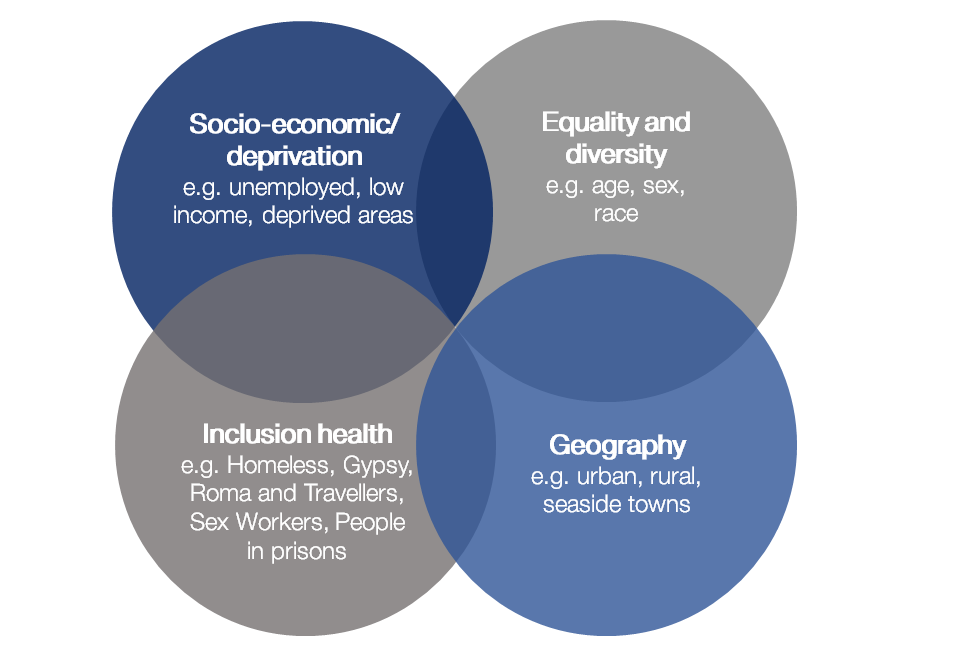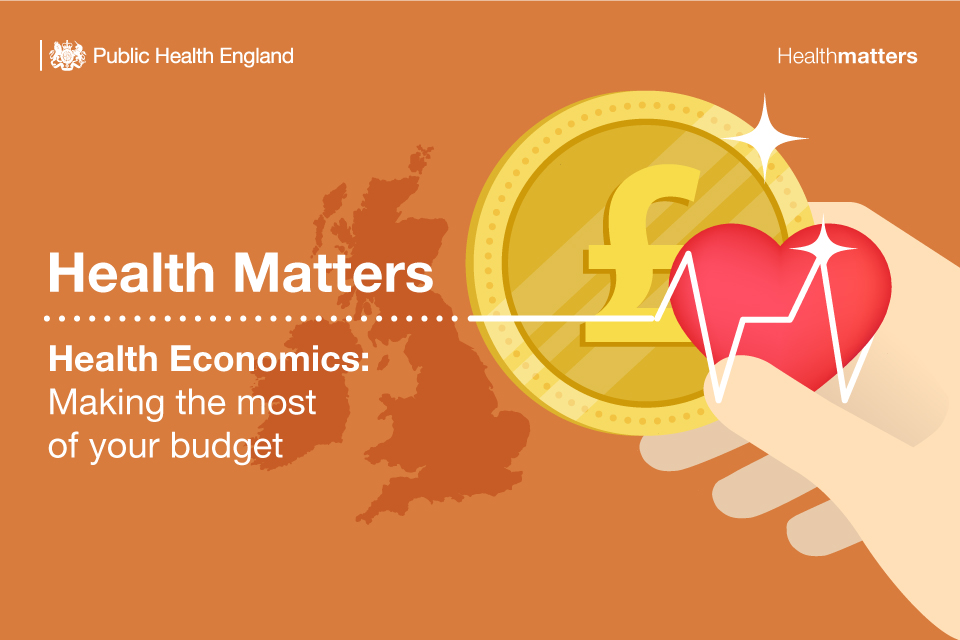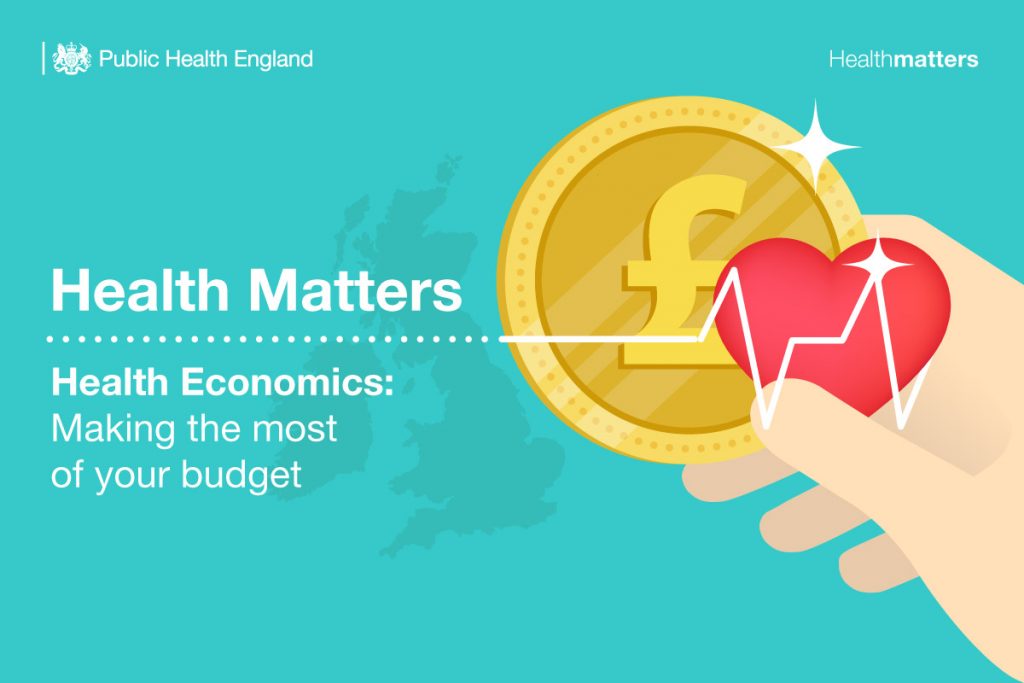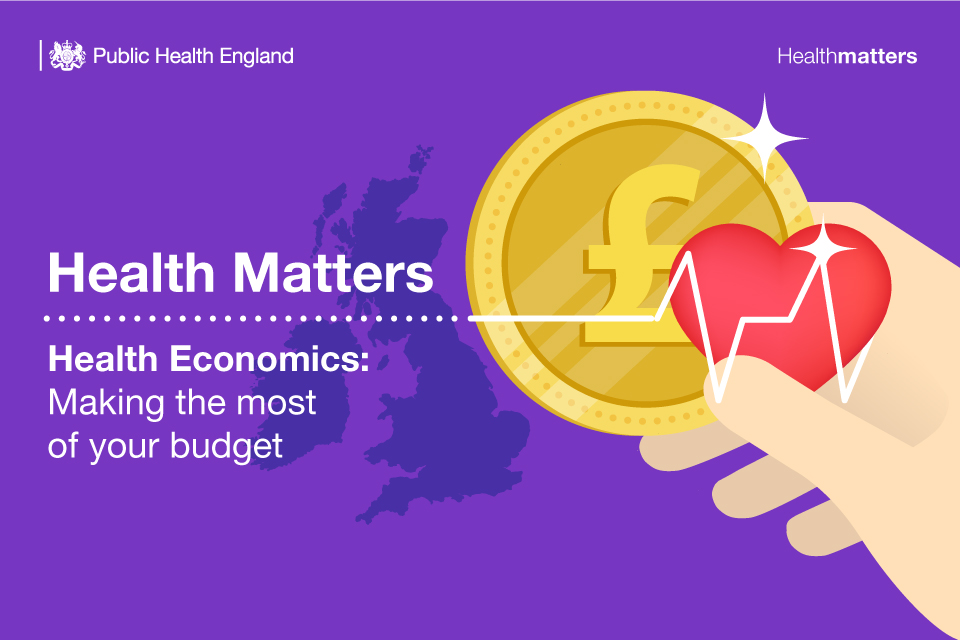Reducing the burden of disease
Posts relating to PHE Priority 2: Reducing the burden of disease
Place-Based Approaches for Reducing Health Inequalities is a new set of resources that aims to reinforce a common understanding of the complex causes of costs of health inequalities, and provide a practical framework and tools for places to reduce health inequalities. Read this blog to find out more.
PHE has updated the Health Inequalities Dashboard and the Segment Tool to support national and local action to reduce health inequalities. Read this blog to find out more about how to use the tools.
PHE's Health Economics Evidence Resource was produced to help local areas access the evidence they need to make evidence-based investment decisions. It has now been updated with over 100 interventions added and to include evidence from some of the latest health economics sources.
In the recent launch teleconference of the latest edition of Health Matters – on the subject of ‘Health Economics and making the most of your budget’ – we had a range of important questions on PHE’s Health Economics tools from professionals across the UK. This blog summarises the main topics that were covered.
Health inequalities are a social justice issue, and the challenge of addressing them is core to public health practice.
The human costs of smoking, drinking too much alcohol and an unhealthy diet are widely known, with consequences ranging from heart disease and type 2 diabetes through to many types of cancer.
Evidence shows that prevention and early intervention don’t simply tackle the human cost of ill health, they also represent good value for money, reduce demand on public services and support economic growth.
PHE's Spend and Outcome Tool allows users to see how much is being spent and the impact it is having on relevant outcomes, meaning they can compare across public health programmes, and compare these data against other local authorities.
An urgent and costly public health problem During the 1950s, smog (a toxic combination of soot and sulphur dioxide) was commonplace in UK cities and a major source of disease. Since the Clean Air Act of 1956, the character of …
In leading PHE’s Health Economics team it’s my job to make the economic case for public health, whether that’s providing return on investment tools for local government and the NHS, or working with national government to discuss the wider impact …








